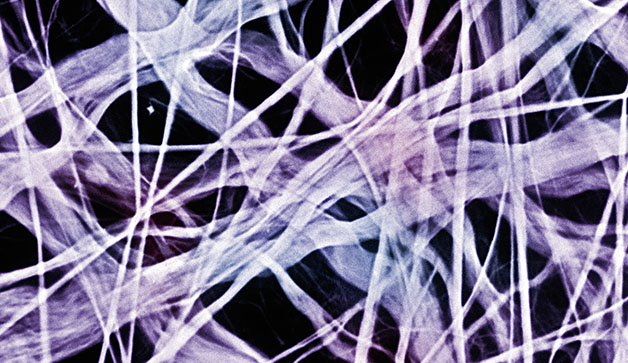The term Autophagy was introduced by Christian de Duve during the Ciba Foundation Symposium on Lysosomes – which was held in London in February 1963. In 1974 he was honoured with the Nobel price in Physiology or Medicine for his pioneering research about peroxisomes and lysosomes. In 2016, once more, a pioneer in the field of autophagy research won the Nobel price: Yoshinori Ohsumi, a Japanese researcher, whose findings “led to a new paradigm in our understanding of how the cell recycles its content”.

Autophagy (Autophagocytosis) describes the fundamental catabolic mechanism during which cells degrade dysfunctional and unnecessary cellular components. This process is driven by the action of lysosomes and promotes survival during starvation periods as the cellular energy level can thus be maintained.
During classical autophagy, autophagosomes are generates, organelles which are surrounded by double membranes (see Fig. 1) and which contain the cellular components to be degraded. The autophagosome formation is induced by class 3 phosphoinositide-3-kinase, Atg 6 (autophagy-related gene 6) and ubiquitin or ubiquitin-like modifications of the target proteins.
Subsequently, autophagosomes traffick through the cytosol of the cell and finally fuse with lysosomes to form an autolysome. After this fusion the cargo is degraded by lysosomal hydrolases.
Role of autophagy in cellular processes

Autophagy plays a crucial role in several basic cellular and pathological processes (Fig. 2).
As already indicated, nutrient starvation induces a high level of autophagy to maintain cellular energy levels. Furthermore, autophagy plays an important role in innate immunity as pathogens which invade cells (e.g. Mycobacterium tuberculosis) can be targeted for degradation with the same mechanism described above. As autophagy leads to the degradation of damaged organelles, it can also function as a repair mechanism. And finally the appearance of autophagosomes is associated with one of the mechanisms of programmed cell death (type II cell-death).
Role of autophagy in pathological processes
More and more findings indicate that alterations in the autophagic degradation process, especially mutations in the ATG genes (autophagy-related genes) can be linked to a number of neurodegenerative diseases, infectious diseases, cancers and other diseases (for a summary, see Jiang and Mizushima, Autophagy and human diseases, Cell Research 24:69–79, [2014]).
Thus, increasing interest in drug discovery and fundamental research is directed towards autophagy-modulating compounds.
 Tools to manipulate autophagy
Tools to manipulate autophagy
To allow easy access to a broad variety of compounds showing an effect on autophagy, Focus Biomolecules have compiled a set of compounds either activating or inhibiting autophagic processes. All these compounds, which you can explore via the links below, are available throughout Europe at tebu-bio.
If you are interested in differentiating between different cellular processes take a look at our post “Differentiate between Apoptosis, Necroptosis, Autophagy & Ferroptosis”.
Interested in these tools? Please contact me with your comments or requests with the form below.
Special price offer
To honor this years Noble prize in Medicine awarded to Yoshinori Ohsumi, Focus Biomolecules is offering an attractive discount on their extensive list of autophagy modulators – Buy two of any autophagy related small molecule and get a third autophagy product (of equal or lesser value) free. The promotion is valid until the end of 2016.
You’ll find the details of this promotion here, available to European Researchers at tebu-bio.com.

Learn more about tools like this by subscribing to thematic newsletters on your favourite research topics



